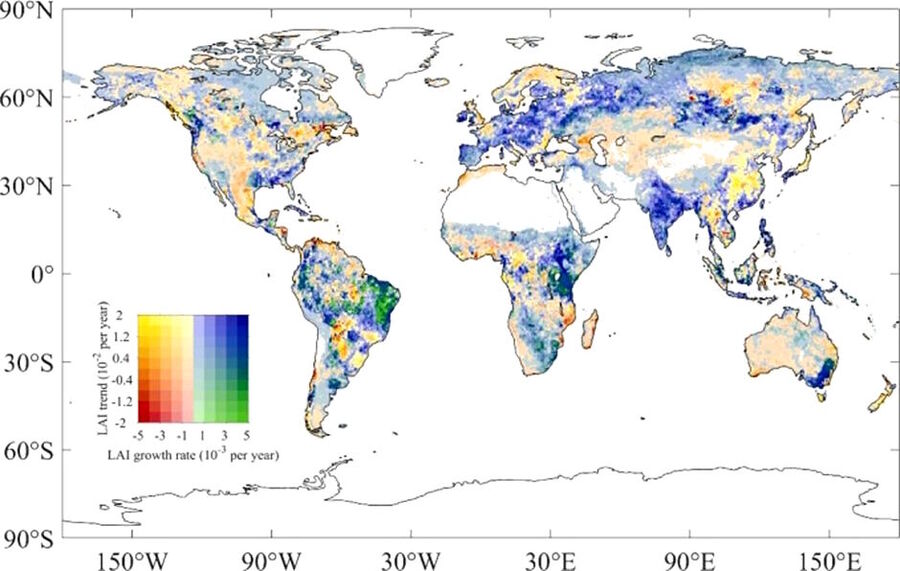It is known that the planet has been greening since at least 1980, with some estimates suggesting increased levels as high as 14%. In a detailed paper published in 2016 by 32 authors from eight countries, it was noted that there was a "persistent and widespread increase" in growing-season greening over 25-50% of the global vegetated area. Now the Chinese scientists, including Eco-Climatologist Professor Tiexi Chen, state that "global greening is an indisputable fact".


It has long been know that higher levels of CO2 are good for plants with plenty of scientific evidence showing that they grow faster as a result of the boost. Dr. Roy Spencer, the former senior scientist at NASA, notes the beneficial effect on plants, adding: "Though CO2 is necessary for life on Earth to exist, there is precious little of it in the Earth's atmosphere." Levels of CO2 have been much higher than the present over the 600 million years that life has existed on Earth, and plants evolved when there was more of the gas in the atmosphere. Recent atmospheric increases, whether from natural or human causes, have contributed to soaring crop yields. Better technology, fertilisers and land use have all played a part but higher CO2 has contributed to an estimated annual 2.4-3.8% rise in maize, rice, soyabean and wheat - four staples that provide 64% of human caloric intake. Under the collectivist Net Zero project, there are attempts to stop CO2 entering the atmosphere, bans on fertilisers, cuts of meat production and moves to 'rewild' agricultural land. Good luck feeding the world, might be the only charitable response to this insanity.
CO2 greening is largely shunned as a topic of polite conversation in the 'settled' climate mainstream because it helps support the notion that the recent small temperature bounce back from the Little Ice Age has been almost entirely beneficial. There is little evidence that natural disasters are getting worse, be they hurricanes, droughts, floods or wildfires. Exploiting hydrocarbon energy has enabled humans to build better protections against Mother Nature and deaths from natural disasters have plunged by over 95% in the last 100 years. Over the last 25 years, the only global warming outside retrospectively adjusted politicised datasets has occurred as a result of small spikes caused by strong natural El Niño effects. Coral reef growth has soared of late, and Arctic sea ice appears to have started on the upward slope of a cyclical trend. It often seems that the only response of alarmists to all this good news is to point out the window and suggest the bad weather du jour is a sign of imminent Armageddon.
One Italian scientist recently estimated that reducing CO2 back to pre-industrial levels would lead to an 18% decline in the production of many basic global foodstuffs. The climate science site No Tricks Zone highlighted two further scientific studies that showed higher CO2 fertilisation effects were driving global greening and enhancing photosynthesis. Current levels of CO2 in the atmosphere are around 420 parts per million (ppm), and a group of agri-scientists suggested there would be a 30-50% increase in photosynthesis with CO2 in a range from 451-720ppm. This would lead to a 25% increase in crop yields. The scientists looked in particular at barley and found an increase in yield of 54% if CO2 rose to 700ppm.
A great champion of the gas of life is Dr. Patrick Moore, who helped found Greenpeace in the 1970s. He has long pointed to the gradual denudation of atmospheric CO2 as various life forms drew down the once plentiful supplies over 500 million years. He looks forward to the day when governments will meet to sign treaties promising to increase their carbon emissions.
Treble private jets all round.
Chris Morrison is the Daily Sceptic's Environment Editor.




Comment: